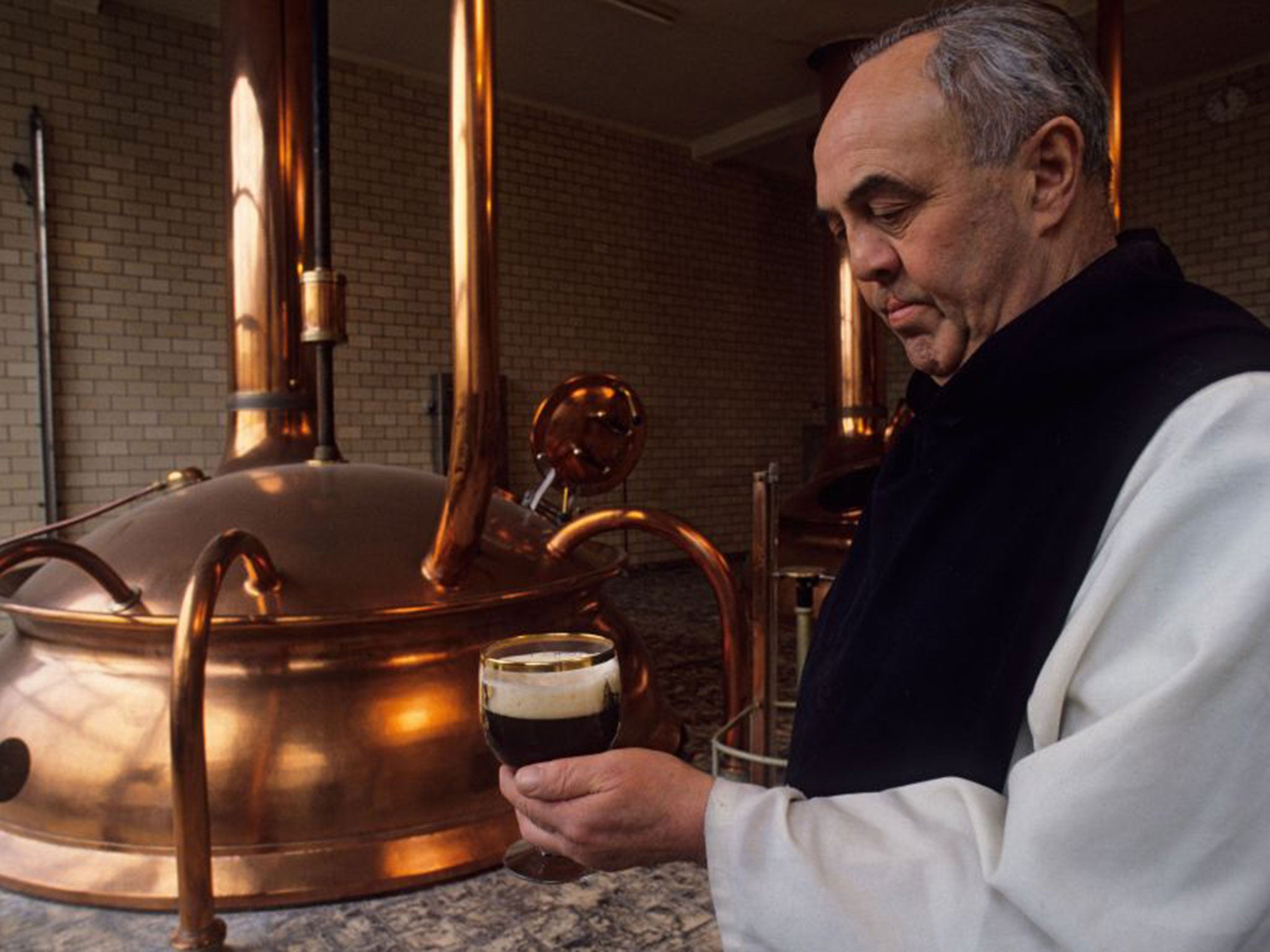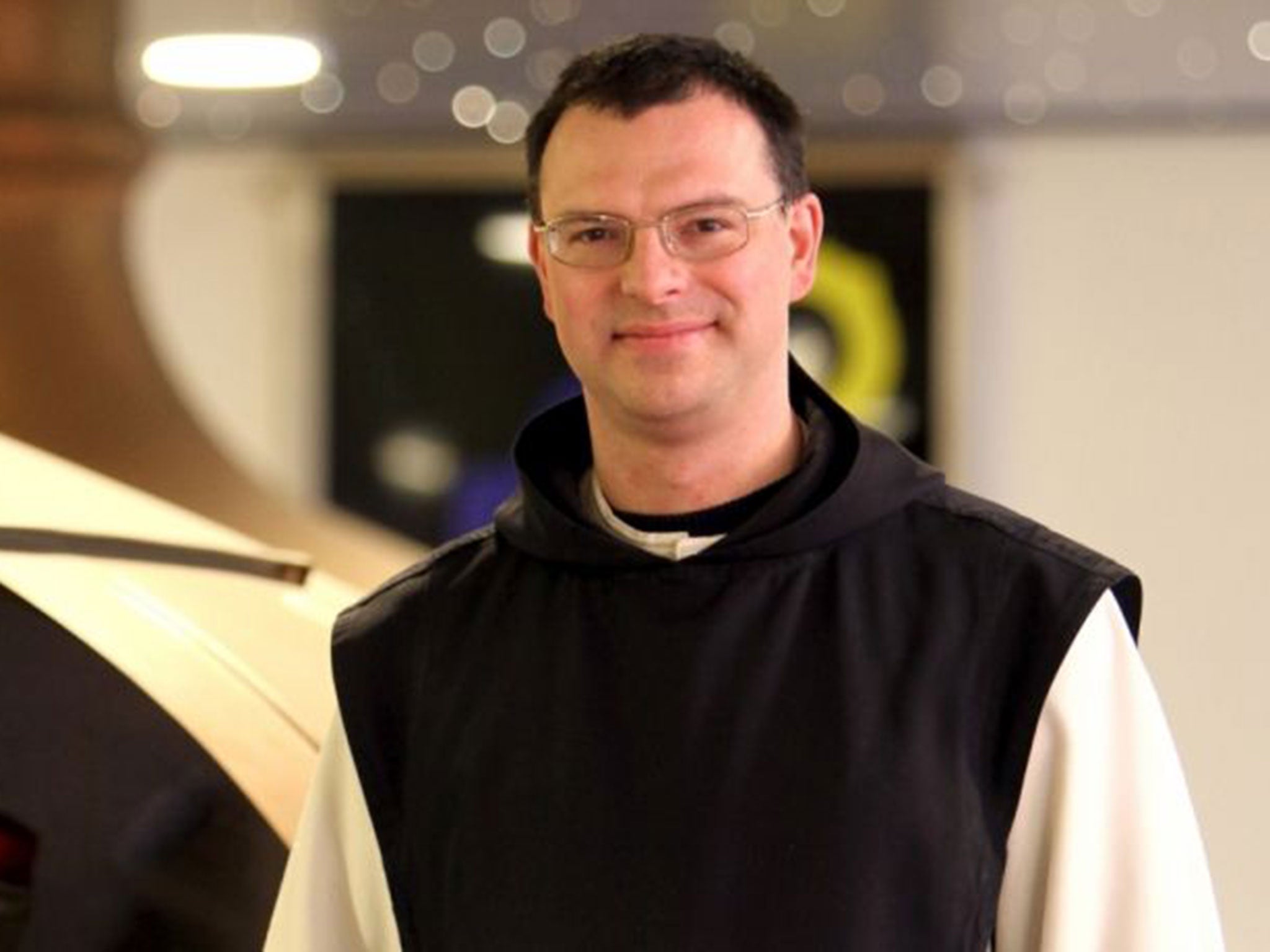Belgium's Trappist monks – too adept at beer brewing for their own good?
Numbers may be declining but production is thriving, leading to some soul-searching

Your support helps us to tell the story
From reproductive rights to climate change to Big Tech, The Independent is on the ground when the story is developing. Whether it's investigating the financials of Elon Musk's pro-Trump PAC or producing our latest documentary, 'The A Word', which shines a light on the American women fighting for reproductive rights, we know how important it is to parse out the facts from the messaging.
At such a critical moment in US history, we need reporters on the ground. Your donation allows us to keep sending journalists to speak to both sides of the story.
The Independent is trusted by Americans across the entire political spectrum. And unlike many other quality news outlets, we choose not to lock Americans out of our reporting and analysis with paywalls. We believe quality journalism should be available to everyone, paid for by those who can afford it.
Your support makes all the difference.Brother Xavier is pragmatic about the declining community of monks at Orval Abbey in a leafy corner of southern Belgium. “Monastic life is not a question of numbers,” he muses during a brief break in his daily routine of prayer, work and meditation. Besides, he says, while fewer European men are finding their vocation, Orval is now welcoming monks from as far away as Rwanda and Mexico.
Beer aficionados will be breathing a sigh of relief. For Orval not only serves as a place of quiet contemplation and worship: it is also one of a handful of monasteries in the world producing beer granted the hallowed label of Authentic Trappist Product. This means the ale is made behind abbey walls under the supervision of monks from the Trappist branch of the Cistercian order. When an erroneous report that Orval might lose its Trappist status because of the dwindling number of monks spread across beer blogs last year, the product started flying off the shelves.
In fact this year marks an unprecedented expansion of the centuries-old tradition of Trappist beer. For the first time, a monastery in the United States has been granted permission to start its own brewing operations.
“There are 160 houses of the order in the world,” says François de Harenne, Orval’s commercial director, who is also the spokesman for the Belgium-based International Trappist Association. “Each of them must earn money for their own needs, and the activities of the Belgian breweries are the most successful. We can sell our beers worldwide, and they were looking for new earnings.”
Production at Orval has shot up 70 per cent in a decade, with demand surging in markets reaching from Canada to Japan. But commercial success has provoked some soul-searching for the monks. Their life is one of austerity and piety adhering to the strict rules of St Benedict: ora et labora – pray and work. Communities must be self-sustaining with the proceeds of their labour supporting the monks or going to charitable projects, but no one can make a profit or materially benefit from their work.
Orval’s community was first established in the 13th century, and the brewery was set up in 1926. Proceeds from Orval’s ale are first spent on upkeep and charitable endeavours, before being reinvested in the brewery. The result is a small building tucked in a corner of the grounds and crammed with the most modern brewing equipment available.

However, global attention has been a mixed blessing. Since the Westvleteren ale produced by Saint Sixtus abbey in northern Belgium was named best beer in the world in 2012, the monks appear exasperated by the customers queuing up at the gates, and have refused to increase production beyond 4,750 hectolitres a year. At the other end of the spectrum, the Trappist Chimay brewery is increasing exports and does advertise, but has special dispensation as it is in an area with high unemployment and expansion meets a social need of the community.
When Orval’s production peaked at 70,000 hectolitres in 2012 – up from 40,000 hectolitres in 2000 – the monks looked around at their handsome church, state-of-the-art brewery and portfolio of charities, and decided to cap production. “We have no other needs,” says Brother Xavier.
While it is an adherence to their spiritual goals rather than their dwindling community which is now causing shortages of Orval, a demographic crisis could threaten the smallest Trappist brewery, Achel, which has only six monks left in the community, most of them over the age of 70.
For decades religious orders of all denominations have been battling a decline in recruits, with a rise in secularism and declining trust in the church blamed for the fall. The Trappist order reports a decline of 20 per cent since 1940. Developing countries are providing some replacements, with 22 Trappist monasteries and nunneries across Africa and the same number in Asia. Orval’s community is down to 12 monks from 35 a few decades ago, but the brewing is left in the hands of 35 lay people. This approach means that production is not affected by the fluctuating number of monks.
The expansion outside Belgium is also helping to keep the unique tradition alive. In 1997, Trappist status was bestowed on the Koningshoeven brewery in The Netherlands, and the last two years have seen a second monastery in The Netherlands, one in Austria, and St Joseph’s of Spencer, Massachusetts, all being allowed to call their brews Trappist ale.
The US beer blogger Charles D Cook, who runs www.drinkbelgianbeer.com, believes the expansion demonstrates the Trappist label can survive. “The Trappists have monasteries all over the world and Spencer has over 65 monks,” he says. “So if the Trappists want to they can definitely have some monks move around here and there as they have done for hundreds of years.”
Silence is golden: Life inside the order
At the last official count of members within the Order of Cistercians of the Strict Observance, or Trappists, released at the end of 2013, there were around 2,000 monks and 1,700 nuns, who are sometimes referred as Trappistines.
Despite it being one of the things that the order are seemingly best known for, the members have never actually been asked to take a vow of silence. However, in following the Rule of St Benedict, an atmosphere of silence is a promise the monks and nuns take when pledging ‘conversion’, or fidelity to monastic life, after around five or six years in the monastery. For the order, silence is important in contributing to continual prayer.
The main reasons for speaking in the monasteries is functional use in helping to complete work, spiritual exchanges with superiors, or group prayer. Many monasteries have libraries which contain not only books used for study or prayer, but newspapers or periodicals, meaning those in the order can keep up to date with events.
There are examples of internet use being allowed for the purpose of study, and the use of email to contact family members. Writing letters is a key way that many of the monks and nuns contact those outside their monastery.
Join our commenting forum
Join thought-provoking conversations, follow other Independent readers and see their replies
Comments